It is well acknowledged by now that passive solutions like fat-burning super foods and dietary supplements are at best a third-tier solution to maintaining a healthy weight. The first two rungs on that ladder? A sufficient amount of routine exercise and a well-rounded, nutritious diet with an eye toward moderate calorie intake, in no particular order. What weight management supplements can offer is a leg up to individuals that are truly dedicated to their personal weight goals. The right product, implemented in the right context, can help many people finally get over the top, for good.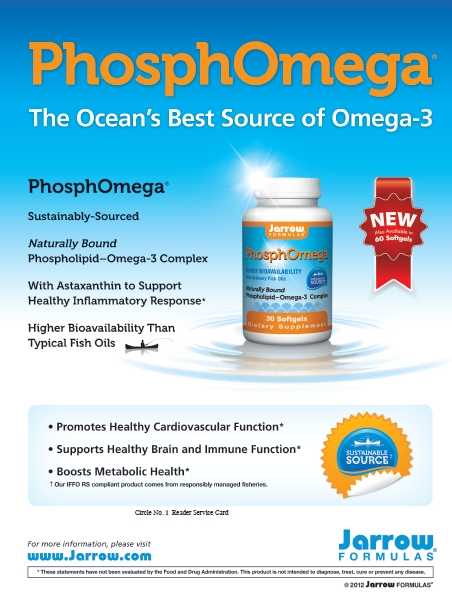
The challenge for product makers lies in offering the safest, most effective support they can to those willing to commit to weight management. “Developing new weight-loss products today requires the use of ingredients that are proven to work, to satisfy more savvy consumers as well as support ethical marketing claims,” says Scott Steil, president of Nutra Bridge, Shoreview, MN. In the end, it is tangible results that will endear consumers to a weight-management option, while others will fade from view due to safety concerns or overreaching benefit claims. The proof will be seen on the bathroom scale, and in the achievement by many of your customers of leaner, and therefore healthier bodies.
It’s Not Just Trendy. It Works.
In a product grouping that is famously missing a magic bullet solution, gaining consumer acceptance largely hinges upon nailing down real improvements with real science. Unless you’re after a fly-by-night, marketing-driven fad, presenting the actual benefits of safe ingredients, however modest and incremental those may be, is the road to long-term success. Manufacturers and the retailers who sell their products have received a welcome boost from modern supplement science. “We have always known that food influences health (i.e., Hippocrates, ‘let thy food be thy medicine, and thy medicine be thy food’), but today we live in a world where we have the technology and the know-how to prove it,” says Trisha Sugarek, B.S., M.S., director of R&D and national educator at Bluebonnet Nutrition Corporation, Sugar Land, TX.
One of these new frontiers involves investigating the relationship between certain natural compounds and our genes, explains Sugarek, stating, “Nutrigenomics is the study of how nutrients and genes interact, and how genetic variations can cause people to respond differently to nutrients.” This study is especially important for weight management, an arena where many factors influence how the body  utilizes, for better or for worse, the sources of energy at its disposal, including the way fat is burned and stored. Sugarek believes that technology is critical to the entry of clinically proven compounds of all types into the health support market. Many among what constitutes a growing and diverse set of weight-management options are relatively new to the game, while others may have been overlooked previously and are now gaining clinical support. In more than a few cases, the results are in and the potential is promising.
utilizes, for better or for worse, the sources of energy at its disposal, including the way fat is burned and stored. Sugarek believes that technology is critical to the entry of clinically proven compounds of all types into the health support market. Many among what constitutes a growing and diverse set of weight-management options are relatively new to the game, while others may have been overlooked previously and are now gaining clinical support. In more than a few cases, the results are in and the potential is promising.
An example Sugarek offers is glabridin, a bio-active component of licorice that has demonstrated benefits for diet-induced obesity. With proper diet and exercise, she says studies show that this polyphenol compound helps regulate the way we metabolize and store fat, a feat accomplished by influencing gene expression. The end result, research undertaken by Kaneka Corporation has shown, may mean a healthier body fat composition, especially in the belly area where visceral fat is stored (1).
Obesity in adolescents is perhaps the most troublesome corner of the obesity epidemic, for the way it can impact the development of a young person’s health, and the difficulty of reversing the overall trend. Kevin Owen, Ph.D., Nafta, head of technical marketing and scientific affairs for Lonza, Allendale, NJ, points to research showing that a branded L-carnitine ingredient (Carnipure from Lonza) can help support weight loss, body mass index (BMI) and body fat reductions in obese adolescents as a component of a weight-management program. “It is well documented that in order to lose weight, energy expenditure has to be greater than energy intake. In this energy expenditure process, fat has to be broken down in the form of long-chain fatty acids and metabolized through a process called beta-oxidation,” Owen says. He goes on to describe the crucial role of L-carnitine in energy production. “As fatty acids enter the mitochondria to be processed, they are transported via L-carnitine. Without L-carnitine, long-chain fatty acids are not broken down by the mitochondria for energy expenditure,” he says. In a weight-loss program that includes exercise and diet, he concludes, L-carnitine supplementation can play an important part.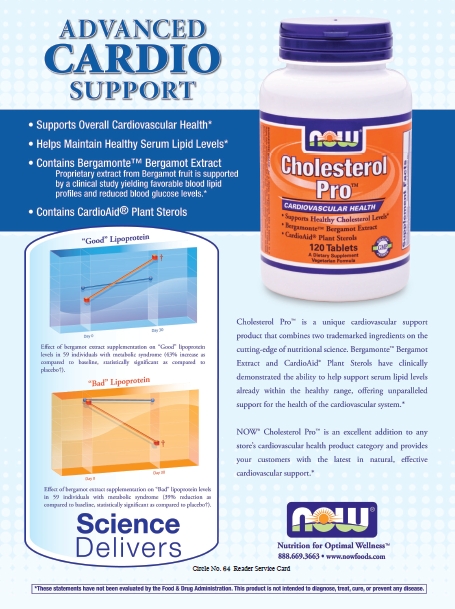
A common approach to shedding weight is to try inducing the body to burn fat more rapidly. Thermogenesis is the name for any process that produces heat in the body. It is associated with the metabolic system stimulating the release of fat from body stores, and then making that fat available as energy in a series of breakdowns called lipolysis. “To put it even more simply, thermogenesis speeds up the metabolism, so you burn more calories. This creates heat, so you burn more fat. Physical activity activates thermogenesis. So does exposure to cold or eating a meal,” says Bob Green, president of Nutratech, Inc., West Caldwell, NJ.
One of the nutrients associated with the thermogenic approach to weight management is bitter orange extract. Green says that the ingredient’s association with ephedra, banned by the U.S. Food and Drug Administration in 2004, as a fellow thermogenic and an ingredient in similar products has probably led to some misconceptions. He says his company’s bitter orange ingredient (Advantra Z) embodies important structural distinctions between ephedra and bitter orange. “These pharmacological differences alter Advantra Z’s lipid solubility, so it does not cross the fatty membranes of the blood brain barrier into the central nervous system,” Green says. The ingredient also makes minimal contact with a slew of excitatory receptors that react to stimulation, and were therefore associated with negative cardiovascular side effects from ephedra.
Another thermogenic branded compound (7-Keto from Humanetics Ingredients) is described as a non-stimulant weight-management option by Steil, which works by up-regulating the activity of certain fat-burning enzymes. 7-Keto, a metabolite of steroidal hormone DHEA, naturally occurs in the body, but its levels trail off with age, according to Steil. Typically, individuals lose around 50% of their endogenous DHEA by the time they are 40. Proven efficacy is something this ingredient can rest its hat on, Steil says,  as well as its two successful new dietary ingredient filings and its documented safety. Steil thinks the profile of 7-Keto is indicative of the importance that manufacturers and consumers are placing on clinically proven ingredients.
as well as its two successful new dietary ingredient filings and its documented safety. Steil thinks the profile of 7-Keto is indicative of the importance that manufacturers and consumers are placing on clinically proven ingredients.
Paula Nurnberger, marketing manager for P.L. Thomas, Morristown, NJ, brings up the benefits of a compound containing fucoxanthin derived from brown seaweed, and pomegranate seed oil standardized for punicic acid. This compound, she says, has been clinically shown to support body fat reduction by helping the liver get rid of stored fats. This improves the liver’s metabolic functions, which can be hampered by excess fat in a condition called non-alcoholic fatty liver disease. This condition is thought to be a factor in some cases of obesity, metabolic syndrome and diabetes (2). A recent study, conducted in Taiwan in cooperation with Rutgers University, revealed that the compound may work by preventing the build-up of fatty tissue, inhibiting the differentiation of immature fat cells into mature ones, encouraging lipogenesis (fat synthesis) and suppressing adipogenesis (fatty tissue build-up) (3). As to her company’s general approach to weight management, Nurnberger says, “The overarching concept is the ability to achieve and sustain healthier cholesterol, blood pressure and blood sugar levels, more mental and physical energy, better mood, better quality sleep and a much higher overall sense of physical and mental well-being.”
The location where excess fat gets stored in the body is now recognized as a key factor in the development of conditions like metabolic syndrome (4). Abdominal fat is a prime culprit, and so Meratrim, a weight-management ingredient described by Paul Dijkstra, CEO of InterHealth Nutraceuticals, Benicia, CA, is interesting for its potential to burn fat away from these areas. This  proprietary blend of two plant extracts (Sphaeranthus indicus flower heads and Garcinia mangostana fruit rind) has a demonstrated ability to reduce inches off of the stomach and hips, according to Dijkstra, who states, “Meratrim’s ability to burn fat, reduce fat storage and ultimately reduce hip and waist size may be due to its clinically studied ability to significantly increase the fat-burning hormone, adiponectin.”
proprietary blend of two plant extracts (Sphaeranthus indicus flower heads and Garcinia mangostana fruit rind) has a demonstrated ability to reduce inches off of the stomach and hips, according to Dijkstra, who states, “Meratrim’s ability to burn fat, reduce fat storage and ultimately reduce hip and waist size may be due to its clinically studied ability to significantly increase the fat-burning hormone, adiponectin.”
Indeed, hormones play a significant role in several approaches to weight management, including the individual’s experience of appetite. Weight loss associated with appetite control is what Slendesta, a non-GMO potato extract from U.S. crops, is designed to achieve. Michele McRae, CN, senior director of new product development, Rainbow Light Nutritional Systems, Santa Cruz, CA, describes the satiety benefits tied to this ingredient. It is said to promote the release of cholecystikinin (CCK), a hormone known to regulate satiety when released into the digestive system after food is consumed (5). “Many of us eat in a hurry, chew too quickly or eat on the run, and we tend to consume large portion sizes. This doesn’t give our bodies the chance to receive the CCK signal in time to keep our portion sizes down,” McRae says.
Other weight-control substances cited by McRae are green tea (a thermogenic), chromium and green coffee been extract (GCBE), standardized to a therapeutic chlorogenic acid level. “GCBE is a very potent antioxidant, also supports healthy blood sugar levels, and up-regulates metabolic pathways to preferentially burn fat for energy and reduce fat accumulation in the liver,” she says. Chromium, 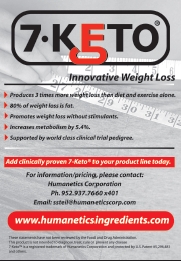 meanwhile, can also benefit blood sugar control. McRae feels keeping blood sugar in check is important for two reasons: so that we don’t store fat too easily and so we do not get hungry between meals and overeat. Green tea can support appetite control and influence weight that way, as well as through thermogenesis.
meanwhile, can also benefit blood sugar control. McRae feels keeping blood sugar in check is important for two reasons: so that we don’t store fat too easily and so we do not get hungry between meals and overeat. Green tea can support appetite control and influence weight that way, as well as through thermogenesis.
“Products that assist with appetite control and provide sound nutrition through meal replacements can help individuals keep themselves at a healthier weight,” says Alexis Harwood, senior brand manager with Reserveage Organics, Gainesville, FL. Appetite control can often be achieved by instilling satiety in the same way food does. “Achieving ideal body weight is not about dieting or food deprivation. It is all about eliminating excessive hunger, stabilizing blood sugar levels and increasing the feelings of pleasure and satisfaction from food,” says Michael T. Murray, N.D., director of product development and education for Natural Factors Nutritional Products, Inc., Everett, WA. A valued tool for achieving these goals is a matrix of soluble fibers called PolyGlycoPlex, or PGX, he adds. Small quantities of the substance taken before meals can impact appetite the way eating impractical amounts of dietary fiber would, according to Murray.
This ingredient can also lower the potentially negative impact on weight control that high-glycemic index foods have when consumed. Its list of benefits, beyond appetite reduction and as described by Murray, include: reduction in postprandial (after-meal) blood glucose levels when taken with foods, effectively reducing the glycemic index of foods and beverages (6); increased insulin sensitivity and decreased blood insulin levels; improved blood sugar control, including stabilizing blood sugar levels in overweight and obese individuals; and lowered blood cholesterol and triglycerides.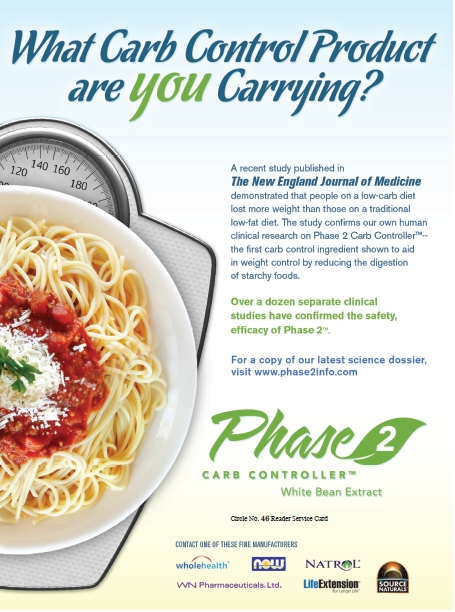
Understanding three major reasons for unhealthy weight gain helped form one approach to managing weight through supplementation, according to Mitch Skop, senior director of new product development at Pharmachem Laboratories Inc., Kearny, NJ. Researchers with his company developed a trio of products that they feel together tackle the issues of overeating, excess starchy carbohydrate consumption and excess sugar consumption. “The Three Phases of Weight Loss individually address each cause of weight gain and overweight status,” Skop says. For instance, a proprietary white bean extract, clinically shown to reduce the digestion of starches and support weight control, is the key ingredient in the hunger-blocking phase of the program.
According to information provided by Soft Gel Technologies, Inc., Los Angeles, CA, banaba leaf extract formulated to emphasize its corosolic acid content can help support both fasting blood glucose levels and post-meal blood glucose levels. The mechanism of action is thought to be based upon the ability of banaba leaf’s bioactive components, corosolic acid and ellagitannins, to “pinch hit” for insulin. It directs the GLUT4 glucose-transport protein to move to cell membranes and begin incorporating glucose into cells, reducing blood sugar levels.
Another entry in this category, the benefits of which involve the digestive factors influencing weight, is a high-amylose corn ingredient (Hi-maize from National Starch Food Innovation), according to Rhonda Witwer, senior business development manager for nutrition with National Starch, Bridgewater, NJ. “Scientific evidence published over the past several years has shown that resistant starch from high-amylose corn shifts metabolism in ways that positively impacts weight,” Witwer says. She explains that it is linked with improving insulin sensitivity, without the usually necessary component of weight loss occurring first. It has also been shown to increase the feeling of fullness over long periods of time, including the day after it is ingested.
 Witwer stresses that all of the angles on Hi-maize’s benefits are important, but Western society’s struggle with blood sugar puts this benefit at the top of the list. “High blood sugar kills more people than any other dietary component—including high LDL cholesterol, low omega-3 fatty acids, high dietary sodium or high trans-fatty acids, according to one recent study,” she says (7). She emphasizes that the biggest potential impact that Hi-maize can have on those who use it for this area (we will dig more into the connection between blood sugar, metabolic syndrome and keeping weight under control later). Witwer also notes that resistant starch constitutes something of a new face in the weight-management community. Though it had been sold by her company in the food industry for years as a natural insoluble fiber, it was the new evidence regarding insulin sensitivity and related weight management benefits that pushed resistant starch into the supplement sphere.
Witwer stresses that all of the angles on Hi-maize’s benefits are important, but Western society’s struggle with blood sugar puts this benefit at the top of the list. “High blood sugar kills more people than any other dietary component—including high LDL cholesterol, low omega-3 fatty acids, high dietary sodium or high trans-fatty acids, according to one recent study,” she says (7). She emphasizes that the biggest potential impact that Hi-maize can have on those who use it for this area (we will dig more into the connection between blood sugar, metabolic syndrome and keeping weight under control later). Witwer also notes that resistant starch constitutes something of a new face in the weight-management community. Though it had been sold by her company in the food industry for years as a natural insoluble fiber, it was the new evidence regarding insulin sensitivity and related weight management benefits that pushed resistant starch into the supplement sphere.
The glycemic impact of foods on our blood glucose levels is related to the rate at which various types of carbohydrates are digested. High-glycemic index foods are bad news for people with existing diabetes or pre-diabetic conditions, and are also believed to influence the development of these conditions via a feedback loop of fat deposits and insulin resistance. Steil cites the potential of an ingredient called InSea2 that is said to block both starch and sugar assimilation by inhibiting the enzymes alpha-amylase and alpha-glucosidase. It can reduce glucose levels after meals by 44%, reduce insulin levels by 22% 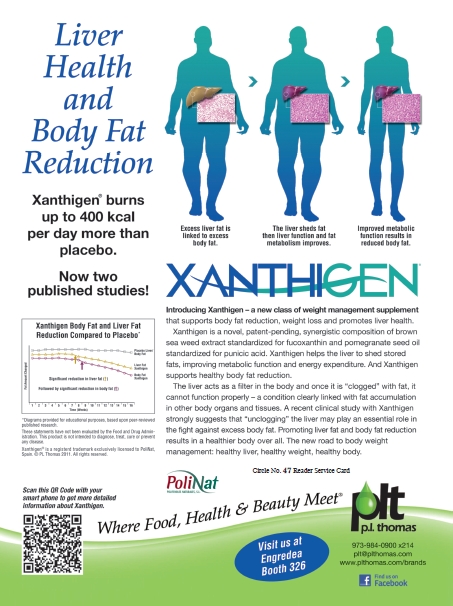 and increase insulin sensitivity by 7% compared with a placebo, according to Steil, the effect being that it eliminates the hypoglycemica that is common after ingesting high glycemic index foods. “It has the ability to reduce the glycemic index of foods, which is critical in helping with weight loss,” Steil concludes.
and increase insulin sensitivity by 7% compared with a placebo, according to Steil, the effect being that it eliminates the hypoglycemica that is common after ingesting high glycemic index foods. “It has the ability to reduce the glycemic index of foods, which is critical in helping with weight loss,” Steil concludes.
Keeping it Off
We are familiar with the victorious vibe of those who’ve reached weight-loss goals, often embodied and exaggerated by satisfied customers posing in advertisements with a whole new look, which we then compare alongside their former selves. But, what about after the “After” photo? Just as familiar is the complaint that unhealthy, excess weight can’t seem to be kept at bay long-term. What evidence is there that supplements can help people steer clear of this problem?
Dijkstra describes a study that examined one ingredient’s potential in this area. By pooling data from two randomized, double-blind, placebo-controlled weight loss trials, researchers studied the effect of 800 mg of Meratrim on 100 people for eight weeks. At the end of two weeks, body weight as well as waist and hip size had been reduced. At the study’s conclusion, the results were an average weight loss of 11.5 pounds and waist and hip reduction by 4.7 and 2.5, inches respectively. The corresponding placebo numbers were significantly less, with about half the inches shed and only a 3.3-pound drop in weight. All participants walked five days a week and consumed a standard calorie (2,000/day) diet. This last element, Dijkstra says, contrasts with using a low-calorie diet like many other weight-loss studies. This was done to better reflect real-life scenarios. “By taking this approach, the researchers wanted to address, as well as avoid, the well-documented failure of individuals to maintain their diet restrictions. This is the classic yo-yo effect seen in many diet restriction programs,” states Dijkstra.
 This rebound effect can have more to it, and be more dangerous than the simple regaining of weight. Not all weight gain is the same, according to information from Soft Gel Technologies. It is explained that when weight is regained after a period of weight loss, visceral fat often constitutes the bulk of the weight rebound. An herbal ingredient (Viscerol AI from Soft Gel Technologies) may curb this trend by inhibiting the formation of adipose fat tissue through the prevention of blood vessel formation, necessary for new fat tissue to develop. One human study found that taking 300 mg of the ingredient 3 times a day resulted in a reduction of visceral fat of 20%, more than double that of the placebo group.
This rebound effect can have more to it, and be more dangerous than the simple regaining of weight. Not all weight gain is the same, according to information from Soft Gel Technologies. It is explained that when weight is regained after a period of weight loss, visceral fat often constitutes the bulk of the weight rebound. An herbal ingredient (Viscerol AI from Soft Gel Technologies) may curb this trend by inhibiting the formation of adipose fat tissue through the prevention of blood vessel formation, necessary for new fat tissue to develop. One human study found that taking 300 mg of the ingredient 3 times a day resulted in a reduction of visceral fat of 20%, more than double that of the placebo group.
Instead of prescribing a diet that is difficult to stick to, restricting the appetite itself is a common approach to avoiding weight rebounds. Steil points to a study involving the ingredients InSea2 and Slendesta in one product, and its ability to curb food cravings as compared with a placebo. “The results were excellent, as the group of subjects using this combination not only kept the weight off that they lost prior to entering the clinical trial, but also lost a significant amount of weight versus placebo,” he says. The combination reduced the amount of calories that subjects consumed when they were given access to an all-you-can-eat buffet.
Metabolic syndrome is a stubborn condition. Since it is so hard to displace once it has taken hold, and weight fluctuations are often associated with this condition, it stands to reason that any progress in combating metabolic syndrome may bode well for keeping weight off. Sugarek says that an eight-week, placebo-controlled in vivo study revealed an abdominal fat-reducing effect of licorice flavonoid oil (LFO) and its related effects on gene expression in the liver. The liver is important as a center of fat metabolism and insulin action. It was found that a 1% and 2% concentration of LFO reduced abdominal white adipose tissues and overall body weight. Visceral fat is thought to be a risk factor for developing metabolic syndrome, so the researchers concluded that LFO may be able to help those with metabolic syndrome brought on by a high-fat diet.
Along the same lines, we return to the case of resistant starch. Witwer expands on the benefits of Hi-maize, specifying that it may impact body composition by increasing fat oxidation and preventing fat storage post-meal, and can assist in the maintenance of previous weight loss, independent of exercise (8). Witwer breaks down what makes resistant starch distinct. Rapidly digested starches, she explains, are digested into glucose early on in the trip through the small intestine. Slowly digested starch is digested further down the small intestine, and resistant starch is fermented in the large intestine, producing short-chain fatty acids.
Researchers at Louisiana State University have published nine studies on Hi-maize, showing that it shifts metabolic hormones and reduces body fat in animal models. For the control in these studies, Witwer says that this group uses the insoluble fiber cellulose. They find it does not produce the same obesity-reducing effects as resistant starch, while delivering the same amount of calories. “Retailers need to understand that different types of fibers have different types of metabolic effects. Yes, everybody needs to increase the amount of dietary fiber that they consume, but the type of fiber will have a lot to do with the specific outcomes that they achieve,” Witwer says.
The soluble fiber matrix PGX, according to Murray, has the capacity to support blood sugar if utilized correctly, a key to keeping weight from returning once it has been shed. “It is important to ingest 1.5 to 5 grams of PGX at major meals and perhaps at least twice more for those with an appetite more difficult to tame,” Murray says. He adds that for many PGX users, ingesting soft gel capsules with water five to 15  minutes before meals is found to be most convenient. There are additional options when it comes to staying the course with weight management. McRae says, “Fenugreek, cinnamon and chromium help maintain healthy blood sugar levels, which can help with appetite control.”
minutes before meals is found to be most convenient. There are additional options when it comes to staying the course with weight management. McRae says, “Fenugreek, cinnamon and chromium help maintain healthy blood sugar levels, which can help with appetite control.”
The weight that shows up on the scale, Green reminds us, is not the be-all and end-all for health and fitness. “A focus on muscle retention—along with weight loss—makes sense for long-term weight management,” he says, while adding that lean muscle may weigh more than fat, but it burns calories and imparts a healthy look to the body. Maintaining healthy muscle tone has a positive impact on many health issues, such as cardiovascular disease, metabolic syndrome, diabetes, arthritis, cancer and more, Green says. This brings the need for healthy lifestyle choices and a commitment to exercise to the forefront.
But, Green points out that thermogenic ingredients including bitter orange extract can also play an important role in retaining muscle. “Thermogenesis helps tone muscle by burning fat. In fact, Advantra Z is not only patent protected for stimulating thermogenesis and reducing weight, but also for helping increase the percentage of lean muscle in relation to total body mass,” he says.
Weight of Responsibility
The concept of weight-loss being achieved through dietary substances marketed for that purpose seems almost set apart from the rest of the supplements industry. This is likely because there is a divide in the realm of weight loss products: some are backed by science and paired with modest claims, while others, often the ones more highly visible to consumers, are given mass exposure to see who will buy in on promise alone, often regardless of safety or efficacy. Experts dish on how to read the messages extended by weight loss product marketing, and how to easily identify trustworthy products and the responsible companies behind them. McRae begins by saying, “Be wary of products that promise extremely rapid weight loss—anything much more than two pounds per week. If it sounds too good to be true, it probably is.” Many consumers already hold this skeptical mantra, so they may gloss over products that seem to promise too much too soon.
Beyond consumer skepticism, the U.S. Food and Drug Administration (FDA) and Federal Trade Commission (FTC) have laid a consistent regulatory focus on weight management. “We approach the potential benefits of weight management in light of the scrutiny/limitations by the FTC/FDA, by making sure that we talk about the science supporting the ingredients and not overhype/over-dramatize the results,” says Sugarek. She acknowledges that unfortunately every industry has “renegade marketers or egregious offenders,” and the weight-management sphere isn’t an exception. As long as people wish to lose weight, there will be companies promising miracles without diet and exercise. “It’s this sort of hyperbole that gives the entire weight management category a black eye—and brings it to the attention of the FDA and FTC,” she says.
The way to bring the swelling down from that black eye requires a group effort, according to Steil. “The key to regaining consumer trust and ensuring future success in the weight-loss arena is found in building a partnership between ingredient suppliers, manufacturers, marketing companies and retailers,” he says. For starters, suppliers need to invest their resources in science, including staging well-designed clinical studies in North America. Manufacturers need to use ingredients that have a proven track record. Marketers, Steil says, need to hand down realistic expectations to consumers, while delivering products that meet or exceed those expectations. Finally, retailers get to choose which products they sell, and one’s that can back up their claims are the way to go. Retailers can also help their customers see how supplements fit into their weight-management program and set objectives that are right for them.
As a supplier, Owen explains how credibility must be ready at hand in this category. “It is our policy to provide nutritional ingredients that are backed by continual scientific research. It is important for a company to be able to provide readily available science that supports product claims,” he says, continuing, “Nutritional claims are expected to be challenged at higher rates—and rightfully so—than ever before.” It’s one thing to have the science pointing squarely at product benefits, but consumers need to know they exist and receive encouragement from those they trust. Dijkstra calls education the first step toward eliminating consumer skepticism. His company conducted a survey of medical doctors, physician assistants, nurse practitioners and registered dietitians at an medical conference on obesity last year. “While exercise and eating right are the best ways to manage weight, 82% of those surveyed currently recommend dietary supplements for weight loss,” Dijkstra says.
Safety is perhaps of more concern to consumers in this category than others. Illustrating what can be done to remove these fears, Green describes a study in Phytotherapy Research on the safety of bitter orange. It reviews data about the substance and one of its key naturally occurring components, finding that the literature proves it is safe (9). “That’s just one of more than 30 research studies and scientific reviews conducted over the past 15 years supporting the safety and efficacy of bitter orange (Citrus aurantium) and its dominant amine, p-synephrine,” Green says.
Sometimes, it pays to be attentive to the way product benefits are communicated. For instance, Witwer says that National Starch’s consumer research has found that primary grocery shoppers believe the phrase “helps maintain healthy blood sugar levels” is an “extremely” or “very important” label claim, even if they’ve never encountered this claim before. So, while many of these products are associated with numerous benefits, there may one angle that, so long as it is communicated responsibly, will resonate with a section of your customer base.
On the government side of things, the confusion and the waiting game surrounding the new dietary ingredient guidance is a challenge for companies selling weight loss products, Steil argues, stating, “My opinion is that 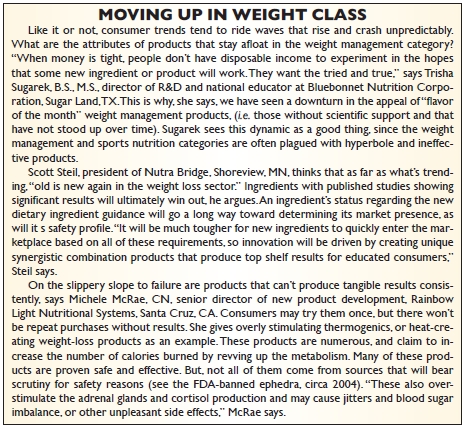 once we have a clear understanding of the new policy and it is enforced, several of the suspect weight loss products will simply not exist in the marketplace.” Meanwhile, Green says that the 2009 FTC Guidelines Concerning the Use of Endorsements and Testimonials in Advertising remains an important resource for what manufacturers can and can’t say.
once we have a clear understanding of the new policy and it is enforced, several of the suspect weight loss products will simply not exist in the marketplace.” Meanwhile, Green says that the 2009 FTC Guidelines Concerning the Use of Endorsements and Testimonials in Advertising remains an important resource for what manufacturers can and can’t say.
“Consumer awareness around natural alternatives for weight management is at a high, and utilizing the Internet through social media and blogs has helped to educate the public,” says Harwood.
A more recent development that manufacturers must be cautious with has to do with the proliferation of these new marketing tools. It also involves the multi-level marketers (MLMs) and other parties that have become more heavily involved in the weight management category. Says Green, “MLMs, franchisees, and distributorships often result in many, many more people promoting products—speaking on behalf of your company—on their own Web sites and Facebook pages, as well as on Twitter, LinkedIn and other social media. And as a manufacturer, you are responsible for what they say.” WF
References
1. F. Aoki, et al., “Suppression by licorice flavonoids of abdominal fat accumulation and body weight gain in high-fat diet-induced obese C57BL/6J mice,” Biosci Biotechnol Biochem. 71(1), 206-14 (2007).
2. “NAFLD Is a Risk Factor for Diabetes, Metabolic Syndrome,” Medscape, Nov. 15, 2007, http://www.medscape.org/viewarticle/565957, accessed Feb. 2, 2012.
3. C.S. Lai, et al., “Xanthigen Suppresses Preadipocyte Differentiation and Adipogenesis through Down-regulation of PPAR-gamma and C/EBPs and Modulation of SIRT-1, AMPK, and FoxO Pathways,” J Agric Food Chem. 60(4), 1094-101 (2012).
4. R.N. Bergman, et al., “Why Visceral Fat is Bad: Mechanisms of the Metabolic Syndrome,” Obesity 14, 16S-19S (2006).
5. “Gastrointestinal satiety signals II. Cholecytokinin,” American Physiological Society,
http://ajpgi.physiology.org/content/286/2/G183.full, accessed Feb. 2, 2012.
6. J.C. Brand-Miller, et al., “Effects of added PGX, a novel functional fibre, on the glycaemic index of starchy foods,” Br J Nutr. 10, 1-4 (2011).
7. G. Danaei, et al., “The Preventable Causes of Death in the United States: Comparative Risk Assessment of Dietary, Lifestyle, and Metabolic Risk Factors,” PLoSMed 6(4), e1000058. doi:10.1371/journal.
pmed.1000058 (2009).
8. J.A. Higgins, et al., “Resistant starch and exercise independently attenuate weight regain on a high fat diet in a rat model of obesity,” Nutrition & Metabolism 8:49 doi: 10.1186/1743-7075-8-49. (2011).
9. H.G. Preuss, et al., “The Safety of Citrus aurantium (Bitter Orange) and its Primary Protoalkaloid p-Synephrine,” Phytother Res. 25(10), 1421-8 (2011).
Published in WholeFoods Magazine, March 2012









